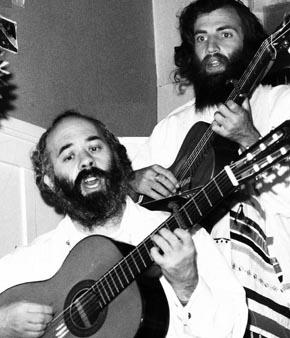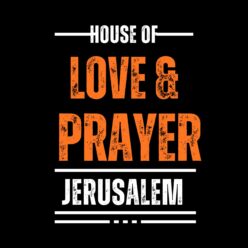From Coopersmith’s introduction to the book:
Listen to me, my darling friends; open up your hearts. Every day, every second, God is sending us messages. The only thing is, the messages come on different levels. One level is the fact: the fact can only reach as far as the mind. Then there’s the story: the story reaches past the mind to the heart. But the deepest of all is the melody: the melody reaches all the way to the soul.
— Rabbi Shlomo Carlebach,
House of Love and Prayer, 1968
In human history there are times and places where the infinite intersects with the finite. I picture the finger of God poking through the fabric of the universe, causing all kinds of disruptions. There may or may not be outer events: thunder and lightning, eclipses and earthquakes, ecstatic crowds and divine revelation. But the real story is silent, invisible, a shift in the nature of reality.
For some of us living in the Haight-Ashbury neighborhood of San Francisco in the 1960s, this was one of those times. For us it wasn’t about the “sex, drugs and rock and roll.” It was about the spiritual teachers from all over the world, and the young people from all over the U.S., who converged here to find each other. It was about sharing a brief moment in the infinite presence of God’s finger, which was then breaking into the finite world. Our lives were changed forever.
I was drawn to these teachers–and the vision they offered of changing our lives and changing the world. I did yoga with Swami Satchidananda, danced and chanted “Hari Krishna” with Swami Baktivadanta, and did Sufi dancing with Murshid Sam Lewis. But the teacher I eventually found to connect with and learn with–my teacher–was a Hasidic rabbi turned folk singer: Rabbi Shlomo Carlebach.
During the Summer of Love in 1967, Shlomo (he insisted that we call him simply “Shlomo”) began talking about starting a house in San Francisco, which he called “the city of tomorrow.” There, young spiritual seekers, not only from Jewish backgrounds, but from any background, could come and find a home, and friends to walk with them on their journey. One day when a few of us were walking on Haight Street, he said, “Let’s call it the House of Love and Prayer.”
“What is a House of Love and Prayer?” I asked.
He thought about this a minute, then looked at us and answered. “When you walk in, someone loves you and when you walk out, someone misses you.”
Months later there was still no House Love and Prayer. Shlomo was busy traveling, giving concerts to packed houses around the world. A Christian friend told me that maybe it was my job to start the House. I accepted his advice, miracles happened, and a month later, in April 1968, I had rented a beautiful old three-story Georgian house on Arguello Boulevard in San Francisco.
I phoned up Shlomo in New York to give him the news. He added it to his business cards, which he passed out at his concerts everywhere, and before we knew it, people were flooding in through our doors.
The most special times at the House were when Shlomo could be with us when he passed through San Francisco on his travels. And the most special of those times were on Shabbos, the Jewish Sabbath, when hundreds of people and teachers from all backgrounds would join us for our celebrations. We shared in the magic of bringing what Shlomo called “the great day of love and peace,” the day that we’re yearning for and dreaming of, into the world.
